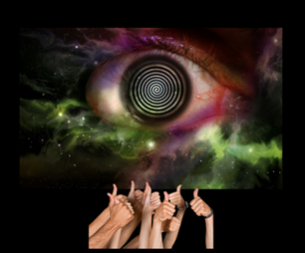Hypnosis and Hypnotherapy: Break Through Client Blocks
Hypnosis and Hypnotherapy: Break Through Client Blocks
How many of your clients seem to be “stuck”? Too often, perfectly reasonable people go in endless circles when it comes to breaking unproductive patterns and eliminating self-sabotaging habits. Most often, people’s undesirable habits are responses and coping mechanisms they employ to deal with anxiety and/or depression.
Anxiety and depression are on the increase, especially among young people. Emma Kauana Osorio and Emily Hyde describe the surge of anxiety and depression in this article. Even before COVID-19 disrupted the economic and social lives of so many individuals, many mental health issues were surging among the young adult population. The pressures of education, career, relationship, and making ends meet have been exacerbated by the impact of social media, and what people are “supposed” to be and feel like.
What can we do to help people who are unable to get past their psychological blocks? Talk therapy can certainly give them a place to vent and analyze their life patterns. However, there are more effective ways to cut through the blocks and set people on a much faster path toward recovery.
Emotions Matter
The role emotions play in a person’s psychological well being cannot be underestimated. Nonetheless, they are often overlooked, particularly when it comes to the blanket terms “anxiety” and “depression.” These two conditions stem from very strong emotions, namely fear and sadness, respectively. Clients who don't know why they are anxious or depressed often are blocking the memory of experiences that disturbed them in very deep ways. Trying to train them to “not be sad or fearful” does little to help their situations.
Often, deep, underlying emotions are locked in the subconscious portion of the mind. This means that no matter how much they talk about what they think is at the cause of their disturbances, clients won’t be able to fully understand—and correct—their behavior until they begin to open up the line of communication between the subconscious and the conscious parts of the mind.
Hypnosis: Opening the Channel
Hypnosis is a specific state of being whereby the conscious mind is relaxed just enough to allow the subconscious mind to emerge into awareness. This state of mind, also known as a hypnotic trance, puts the client into a highly suggestive state.
This is often a good place to begin working with clients who suffer from anxiety and depression. Using hypnosis, you can get the client to relax and accept suggestions to change habits and “tone down” conditions such as anxiety and depression. In hypnosis, we often offer the client a chance to use a means of regulating the intensity of their feelings. By learning to turn them “up” and “down,” they become aware that it’s possible to manage their feelings before they get out of control.
Clients can also accept hypnotic suggestions to moderate compulsive overeating, smoking, drinking, and getting high. It’s even possible to motivate clients to get past over-working and people pleasing as well as procrastination. It can also be used to support the reduction of physical discomfort and foster a positive mindset for healing.
Hypnosis is powerful and easy to administer. It does require repetition, however, so clients will have to be supplied with recordings of hypnotic inductions and suggestions in order to increase their chances of success. Hypnosis can set a course for clients that will lead them to being able to manage their lives better.
Hypnotherapy: Getting to the Source
Hypnotherapy takes hypnosis a few steps further. While the induction of the trance and the process of relaxation are present in hypnosis, hypnotherapy adds resourcing, emotional release, and age regression, in addition to several other highly effective elements.
In hypnotherapy, it becomes possible to discover the source of those feelings in the pit of the stomach, or the sensation that the throat is blocked, by connecting current emotional charges with past experiences. For example, hypnotherapy can help clients achieve ways of modulating their emotions, but it can also allow them to get past them and heal from past trauma.
This is achieved through age regression, an extremely powerful process that takes clients back to the source of the fear, sadness, anger, loneliness, or other emotion that underlies their anxiety and/or depression. The client is offered a chance, while in the regressed state, to express the feelings they have repressed for so long.
They also come to build a relationship with the younger self, becoming the loving parent and authority figure that has always been needed. Having done that, they can change their previous opinions of themselves, and transform old modes of behavior into healthy, productive ways of being.
Hypnotherapy is a deeper way of working with clients than hypnosis is, but you may be surprised to find out that it is quite easy to learn hypnotherapy and get certified as a hypnotherapist.
Learn Hypnosis and Hypnotherapy at The Wellness Institute
The Wellness Institute has specialized in training hypnotherapists for the last four decades. Heart-Centered Hypnotherapy® is a potent blend of techniques that transforms lives. You, as well as your clients, will benefit from training with The Wellness Institute, because you will experience this modality as part of your training!
We offer courses and programs in both hypnosis and hypnotherapy. In the Two-Day Introduction to Hypnosis course, you will learn how to induce hypnosis, offer hypnotic suggestions to your clients for various purposes, and how to put together sessions your clients will thrive upon. Should you decide to try the Two-Day Introduction to Hypnosis, and then move on to the Six Day Hypnotherapy training and certification program, you will receive a substantial discount.
The Six-Day Hypnotherapy Training and Certification Program provides all the information and experience you need to learn how to conduct hypnotherapy sessions. You’ll discover how hypnotherapy is used to treat various conditions, from codependency and addiction to eating disorders and birth issues. Once you complete the six day course, certification is attained by completing several practice sections and a take-home exam.
You will be guided through your online hypnosis or hypnotherapy course experience by seasoned teachers, who will be with you in real time. Your peer group will also be available to work with as you explore the experiences of being therapist, client, and observer.
Many of our students continue to add to their skills and deepen their own healing through our Advanced Training Programs, which offer a broader spectrum of experience with hypnosis, hypnotherapy, breathwork, psychodrama, and Jungian techniques.
The addition of hypnosis and hypnotherapy to your practice will expand your offerings to your clients, and broaden the scope of your ability to help them heal. You’re a practitioner with an interest in helping people, aren’t you? There’s every reason to add this powerful way of bringing your clients past their blocks.









